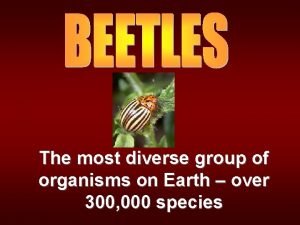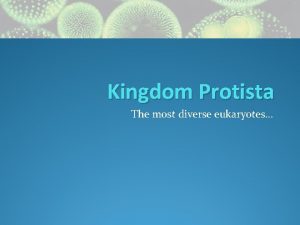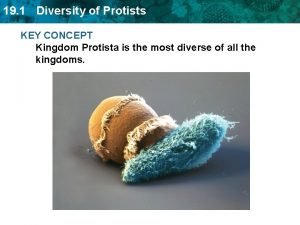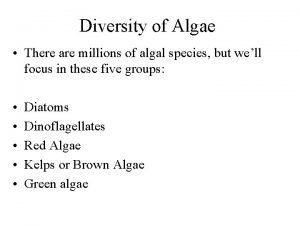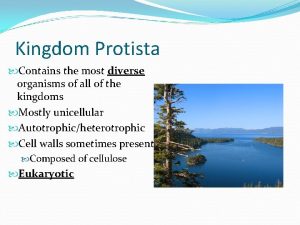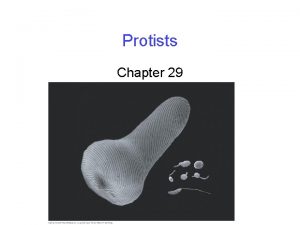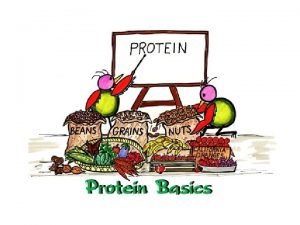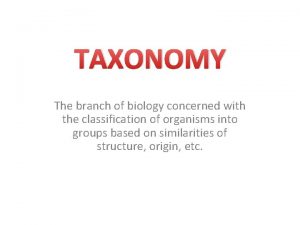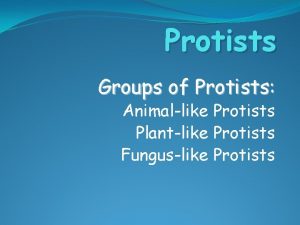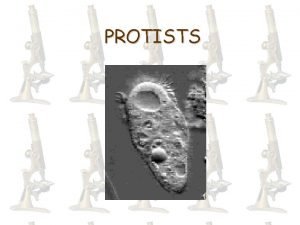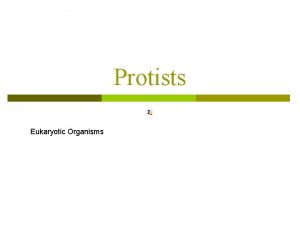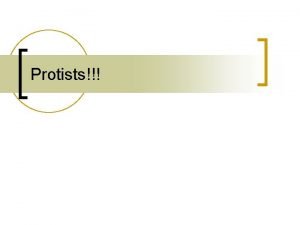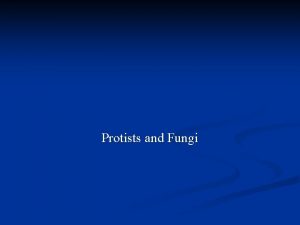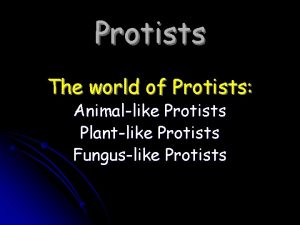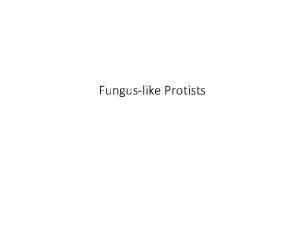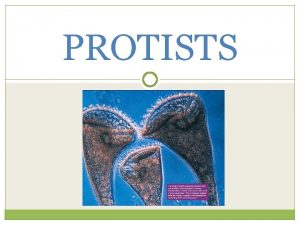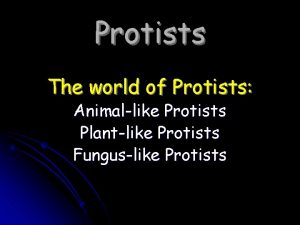Major Groups of Organisms Defined Protists Most diverse














- Slides: 14

Major Groups of Organisms Defined

Protists • Most diverse Kingdom of organisms • Most are not closely related to each other, but are grouped together due to their lack of relation to other organisms (junk drawer) • Taxomists are currently working to modify our current system of classification, which includes altering how these organisms are grouped

Paramecia • Contractile Vacuole: to remove excess water • Cilia: Movement and aids in consuming food Cilia Anal pore Oral groove Gullet Contractile vacuole

Euglena • Eyespot: detects lights • Chloroplast: photosynthesis • Flagellum: locomotion

Amoeba • Pseudopodium: movement and consuming food • Contractile vacuole: release excess water Pseudopodia Cytoplasm Nucleus Contractile vacuole

Fungi • Cell walls made of chitin http: //www. wisc-online. com/Objects/View. Object. aspx? ID=bio 304

Plantae • Eukaryotic, Multicellular, Autotrophs • Produces their own food (sugar) by photosynthesis

The 4 Plant Divisions (Phyla) • Mosses-most primitive; nonvascular plants; dependent on water • Ferns-reproduce via spores • Gymnosperms (Conifers)-large taproot; cones for reproductive structures “nakedseeds”; evergreens • Angiosperms- flowering plants; vascular system (xylem & phloem) most diverse plant division; most advanced; fruits for seed dispersal

Animals • Heterotrophic • Multicellular eukaryotes • No cell walls

Arthropods • Exoskeleton-hard outer covering for protection, support, & locomotion • Jointed legs • Segmented body-head, thorax, abdomen • Compound eyes-lots of lenses for seeing many angles • Specialized Mouthparts • Greatest Diversity of all Animals Image courtesy of John R. Meyer, Department of Entomology, NC State University

Annelids • Body cavity is divided into separate compartments by partitions called septa, which gives them their segmented appearance • Most are hermaphroditic (male & female gonads) • Live in moist environments and respire through their skin • Have a nervous system & closed circulatory system • Earthworms—vital to soil creation and maintenance

Amphibians • Cold-blooded vertebrates (no constant body temperature) • Said to have a “double-life” due to their life on land, but dependence on water • First group of animals to colonize land • Rely on water for reproduction and gas exchange • Undergo metamorphosis life cycle • Strong indicator of water quality

Mammals • Warm-Blooded (sweat glands— homeostasis) • Ability to “think” is best adaptation • Increased reproductive efficiency (quality vs quantity) & securing and processing food • Mammary Glands: provide nourishment for young (suckling instinct) • Live young (placentals—most diverse & marsupials)

Mammals • • Hair--body covering Fat & Energy Storage 4 -chambered heart Large lungs & diaphragm
 Most diverse group of organisms
Most diverse group of organisms Categories of protists
Categories of protists How does it move
How does it move 3 groups of protists
3 groups of protists Algal
Algal The most diverse eukaryotic kingdom is
The most diverse eukaryotic kingdom is Most diverse kingdom
Most diverse kingdom Stramenopila
Stramenopila Most diverse biomolecules
Most diverse biomolecules Member of the same species
Member of the same species Multicellular and unicellular organisms
Multicellular and unicellular organisms The collection of well defined objects is called
The collection of well defined objects is called Amoeba paramecium euglena
Amoeba paramecium euglena What genus do dogs belong to
What genus do dogs belong to 8 levels of classification
8 levels of classification
